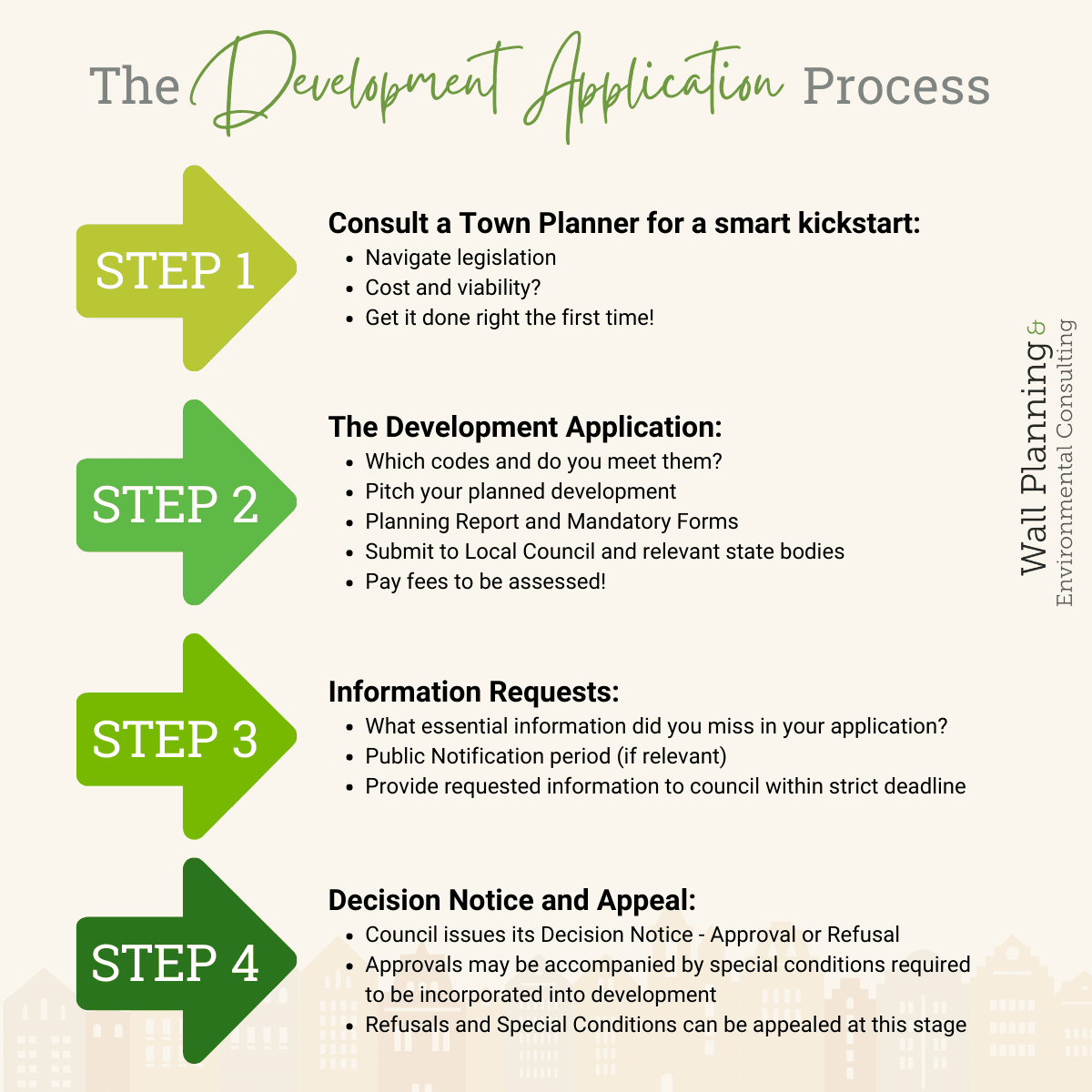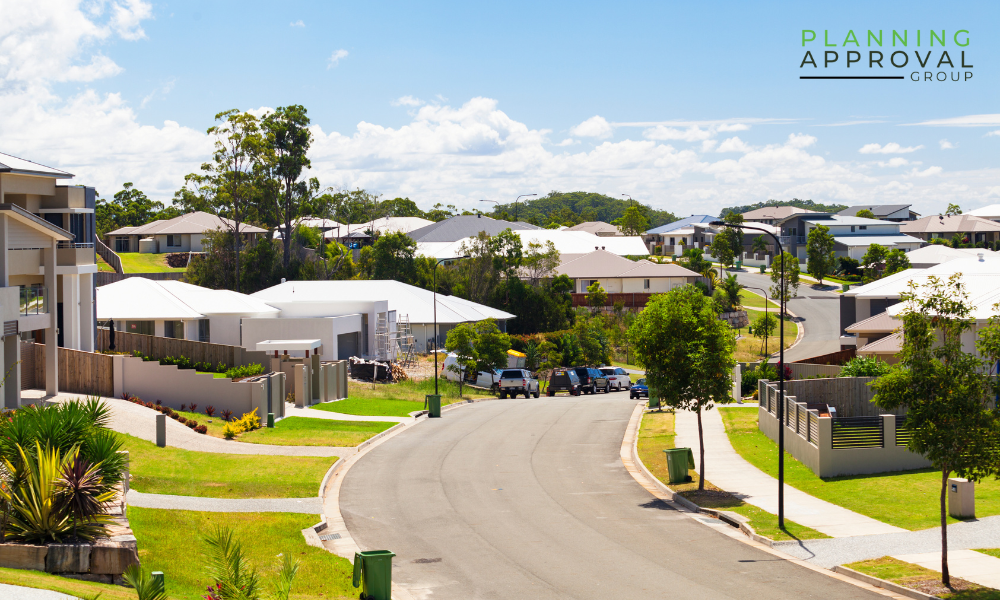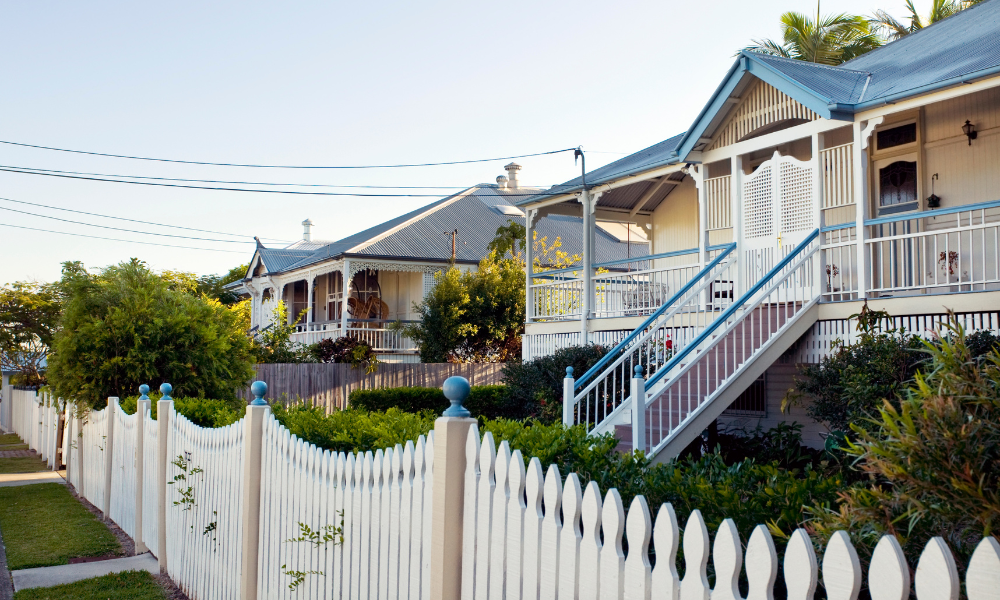Writing a Development Application? Here's the Process!
Writing a Development Application for a property in Queensland? Fantastic! Do you know the process and what to expect at each stage? Eliminate surprises and timeline fatigue with this handy 4-Step walkthrough of the Queensland development application process.
Step 1: Consulting a Town Planner
Consulting a Town Planner is the smart way to kick off a Development Application (DA) for a number of reasons:
- They know their stuff and can navigate and advise on legislation and planning requirements;
- They can provide a cost estimate that includes fees from council and other bodies;
- They can provide an initial assessment of the viability or ‘straightforwardness’ of the project; and
- They can save you time and stress by just doing it all for you!
Can PAG do this for you? Absolutely! Contact us today for your 20-minute consultation and to request a fee proposal.
Step 2: The Development Application
Development Applications are actually made up of a series of forms and documents that are supplied to the local council and, if required, relevant state government bodies. Forms relating to development applications can be found on the Queensland Government State Development Planning website.
The mandatory form most commonly used is DA Form 1: Development Application Details, which provides the basic details of the property and the proposed development. Other forms may be required depending on the specifics of the development.
Along with the mandatory forms, the main development application document is the Development Application Planning Report.
You can usually find examples or templates for planning reports in the planning section of your local council’s website. Here is an example. This report can be quite lengthy and requires specific details of the property and the planned development, which are then presented against the relevant local and state planning codes.
How do you find the right codes? Well, here are the main legislative and planning sources that a Queensland town planner may refer to in a planning report:
- The Planning Scheme of your local council, which outlines the zones, overlay codes, and strategic framework. Some examples are:
- Brisbane City Plan 2014;
- Central Highlands Regional Council Planning Scheme 2016;
- The Regional Plan for the region your development is within;
- The State Planning Policies that may require a referral to a state government body; and
- The Economic Development Guidelines, for properties in Priority Development Areas.
In addition to addressing codes and legislation, some of the other important features identified in a Development Application are:
- What type of development are you proposing (Reconfiguring a Lot or Material Change of Use)?
- Does the development fit perfectly with the planning scheme (Code) or will it require a bit more research and ‘pitch’ (Impact)?
- Does the application require referral to a state government body before being submitted to the local council?
- Are the development plans suited to the surrounding properties, uses and infrastructure?
Once it’s all written and compiled, the development application is submitted to the local council and may also require submission to a state government body, depending on specifics of the property and development.
Unless otherwise specified by the council or legislative body, fees are also to be paid when submitting the application. Generally, assessment of the application will not begin until fees have been paid.
Can WPE do this for you? Yes! We can put together your development application from start to finish, utilising our considerable knowledge and experience of what is required and where to find it. How stress-free does that sound!
Step 3: Information Requests
Now that your Development Application has been submitted, the waiting game begins. It’s never an instantaneous process, no matter how accurate your report might be. Along with typical application volume waiting periods, a lot of consideration by the council goes into the assessment to ensure that what is proposed meets requirements and is appropriate to its location.
(It’s also important to note that submissions to state government bodies can further slow down the assessment application process.)
Before a decision will be formally made, you may receive a Request for Information from the council. This is generally for information that may have been missed or that may be required additionally for your proposed development to align with the codes.
In the instance of an assessment requiring public notification, this is the point where the notification is often carried out and the results provided to the council.
There are strict deadlines associated with Information Request responses and once the response is received, the assessment process can continue.
Can PAG do this for you? Yes! Don’t sweat it, we’ll get that information together quick smart.
Step 4: Decision Notice and Appeal
Upon completion of assessment, the council will issue a Decision Notice that states either approval or refusal of your proposed development.
Approvals can sometimes be accompanied by special conditions that must included in the development for it to meet legislative requirements. This may include criteria including specific infrastructure connection requirements and specifications for the look of the building. With or without conditions, with that Decision Notice – Approval, you’re good to go!
If you receive a Refusal, it’s not the absolute end of the process – you are able to appeal the Decision Notice. In fact, you can lodge an appeal regarding Special Conditions of Approvals as well if you believe that they are not relevant to the development.
Can PAG do this for you? Totally! We can assist with understanding decision notices, special conditions, and lodging appeals. In fact, we can help with all your planning needs – contact us today for your free 20-minute consultation and to request a fee proposal.











